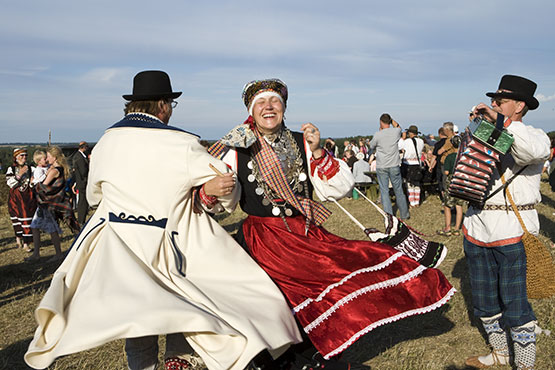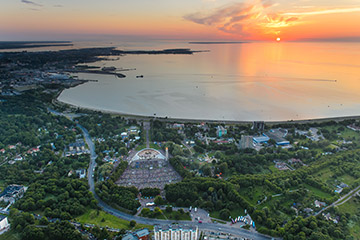About Estonia
Estonians are keen about their culture and traditions. The Estonian language belongs to the Finno-Ugric language family like Finnish and Hungarian. It contains about a thousand words and expressions that date back to the last ice age. Many visitors keep saying that the language sounds like singing or like elvish. Maybe this is also one of a million ways to sing – to speak in Estonian?
You cannot talk about Estonia without mentioning the ancient folklore and singing traditions.
Estonians have one of the biggest collections of folk songs in the world, with written records of 133 000 folk songs! One of the most striking examples of the culture of ancient Estonians has to be the rhythmic verse, as well as the aural tradition of folk song where each line is repeated several times with thematic variations. These days you can explore the remains of this culture on the island of Kihnu and the Setu border region in southwestern Estonia.

The seto leelos are a way to express thoughts and emotions, to collect memories and pass them on to the future generations as the setos themselves consider singing natural and as a part of everyday life. The singing tradition in Setomaa is kept alive and well by the older and younger generations alike. The most famous local singers throughout the history were able to recall up to 20,000 rhymes, earning the title "Seto Mother of Songs."
One of the highlights for every Estonian has to be the Estonian Song and Dance Festival, which has been held every five years for almost the past 150 years. Around 100 000 people gather together dressed in colourful national garments to the Tallinn’s Song Festival Ground to sing together as a giant choir. This is also one of the reasons why Estonians are often referred to as the “singing nation”. The uniqueness of this mesmerising event has even earned the song and dance celebration a place at UNESCO's prestigious list of Intangible Cultural Heritage.

Music has also played an important role in the recent history of Estonia – the country’s break from Soviet rule is often called the “Singing Revolution”, which gains its name from the mass folk song events that took place in Tallinn’s Song Festival Grounds in the summer nights 1988.
It might seem that Estonia lives pretty much in the past, but in fact Estonia, or e-Estonia, is one of the most progressive countries in the field of digital society and IT. Most people use e-banking, pay parking with a mobile phone and pay taxes, even vote online. The right to internet access is one of the fundamental human rights in Estonia - wireless internet is almost everywhere and almost always free. The digital society makes life in Estonia much easier – it takes only 15 minutes to establish a company and tax returns take less than 5 minutes!
No wonder that Estonia is the country of origin for Skype, TransferWise and KaZaA.
While it seems that Estonia is a hidden gem far away from the mainland Europe, it is actually easily accessible – you can fly, sail, ride or drive to Estonia from anywhere in Europe. This small coastal country is a short ferry trip away from Finland and Sweden, a coach ride away from such European capitals as Warsaw and Berlin, and an overnight train from Saint Petersburg will land you at the heart of Tallinn!
If you want to learn more about Estonia, check the official Estonian tourism information website Visit Estonia

